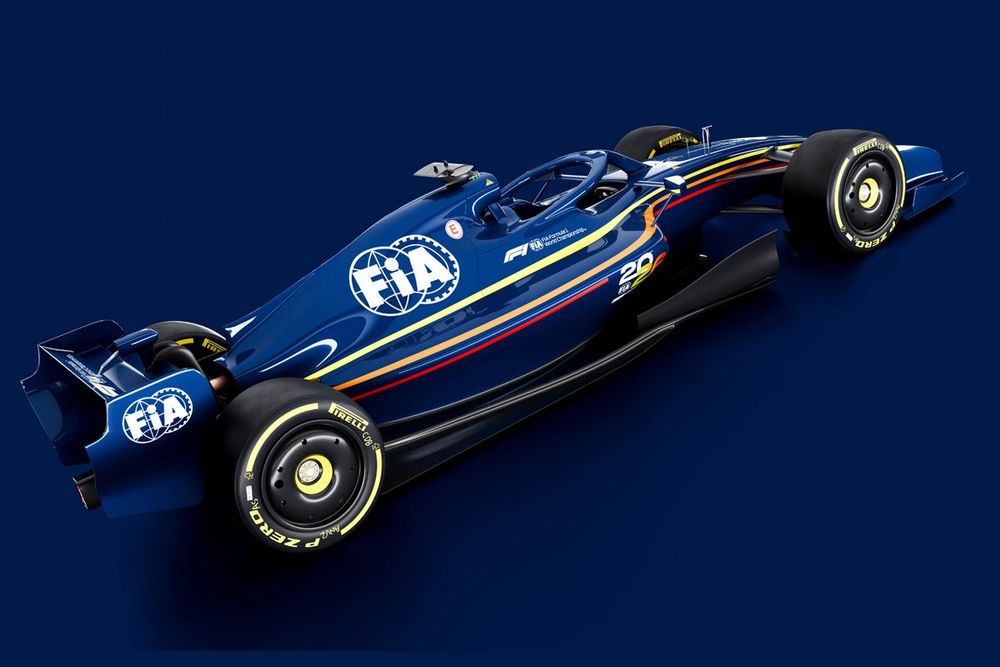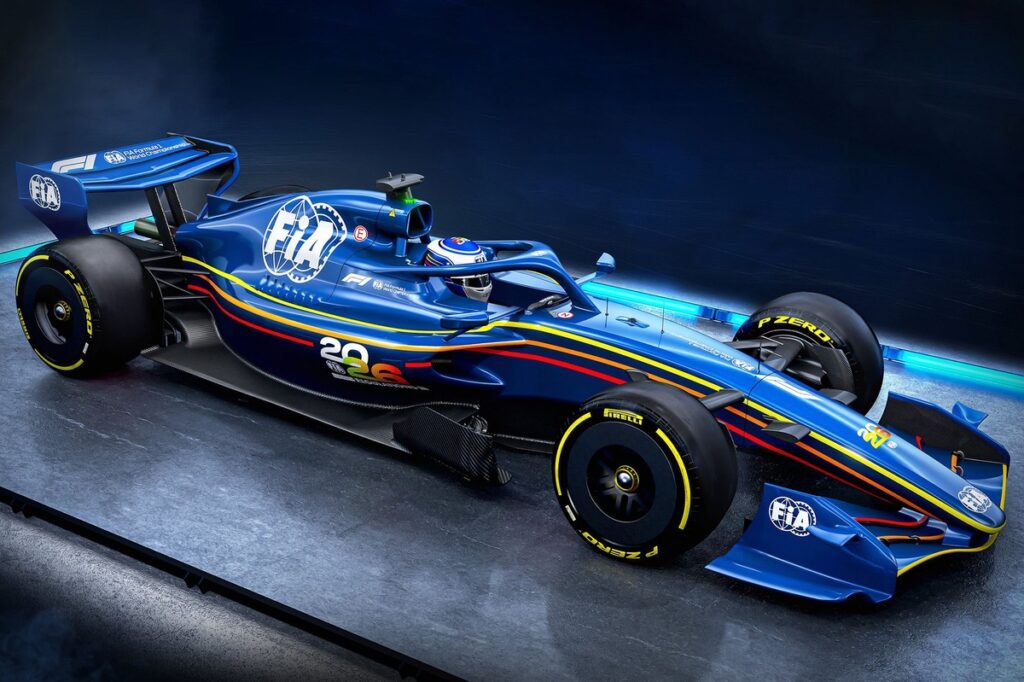Teams are currently preparing for Formula 1’s technical overhaul on both the chassis and engine side for 2026, although the prospect of new regulations is not welcomed equally by all.
Several drivers have spoken out after their first runs in the simulator. Max Verstappen was the first one two years ago, followed more recently by Charles Leclerc, Alex Albon and Lance Stroll. Drivers fear that F1’s new era will become far more complex for fans and drivers alike – and that the series risks becoming more of a management exercise rather than pure racing.
The FIA, however, expects that the end product will not be as bad as feared. In an interview with Autosport, FIA single-seater director Nikolas Tombazis elaborated on the main concerns in the paddock and stressed that the regulations are still a work in progress.
“Obviously when you have a much bigger proportion of electrical power and a smaller proportion of ICE power, and you don’t have batteries that are discharging over the entire race distance, then energy management becomes a bit more of a challenge,” said Tombazis.
“Now the opportunity of these new cars for the participating manufacturers is to develop the batteries, the electrical systems, and so on. I think we will see some innovation on the electrical side of the engine next year, which I think will be good. But clearly there are some challenges with the energy management, and the noises that we hear are usually related to that.”
Further changes expected, but not to the engine formula
Tombazis is expecting, however, that things won’t be as dramatic as portrayed by some of the drivers. “We haven’t finished the rules yet in that respect,” he added. “The rules are evolving and we knew of these issues from day one. The moment you reduce one power, and you increase the other one, we knew that there were issues to address.”
Nikolas Tombazis, FIA Single Seater Director
Photo by: Andy Hone / Motorsport Images
Based on feedback from the various simulator runs, the FIA is aiming to make further adjustments to the regulations.
“We have to go through an approval process with the PU manufacturers, so we can’t just unilaterally make a change tomorrow,” said Tombazis. “But by and large, when we address specific problems, teams and PU manufacturers tend to be relatively helpful. I think what we have now and what we’ll have at the beginning of next year is not exactly the same thing. I’m not saying it will be completely different, but there will definitely be a lot of evolution between now and the start.”
It’s important to note that this evolution does not apply to engine hardware. Nothing will change in the engine formula, and with work already underway, it would also be too late for that. Moreover, any proposals in that direction would descend into a political battle between manufacturers confident in their 2026 projects and those who prefer adjustments.
“Obviously, one of the difficulties is that it isn’t always easy to get everyone to agree,” Tombazis admitted. “When teams and manufacturers discuss these matters, they think of a combination of the good of the sport and their own competitive position. Of course, one bit influences the other, so unavoidably, there will be different opinions. At the moment, the technical specification of the engines, the electrical part, and all of that is set in stone. That’s not changing.”
“We absolutely don’t want drivers to lift off on the straights”
It means the FIA can only play with some other parameters, particularly the energy recovery and the energy deployment at specific tracks. It relates to a so-called ‘turn-down ramp rate’ in the technical regulations, and a sliding scale of permitted energy harvesting depending on the venue, rather than the fixed amount of 8.5 megajoules per lap.
“I think there’s a general feeling that all of these topics will have very strong levers on which to react. Those things have to do with the maximum power, how quickly it will reduce on the straights, the energy that you can recover, etc. There are all sorts of levers that we can play on, and that we are playing on,” Tombazis explained.
The intention is to avoid what the FIA called “unnatural things”. It refers to the doomsday scenario outlined by Verstappen two years ago: cars running out of electrical power before the end of a lap, or drivers having to downshift on the straights to use their limited energy most efficiently.

F1 2026 FIA car renders
Photo by: FIA
These are precisely the things that the governing body is wanting to prevent. “There will be quite a lot of new provisions in order to manage the energy better and to make sure that cars are not decelerating on the straights, doing funny things, or, let’s say, doing unnatural things,” added Tombazis.
“What we don’t want, is a situation where they have to lift off, for example, on the straights or anything like that. We will absolutely, categorically, make sure that they don’t have to lift off in a particular area in order to do something with the energy or whatever. When they need to go faster, drivers will keep the pedal to the metal, as they say.”
Some PU manufacturers are secretive about 2026 engines
A complicating factor in all this is that not all manufacturers are equally open with the FIA. “Not all teams and PU manufacturers are as transparent with us in their data. Some are very secretive about what they’re doing, while some others are very open and very helpful in proposing things. We are taking a lot of those ideas on board,” said Tombazis.
Although he didn’t name specific manufacturers, it seemed obvious that the ones confident in their own product prefer to reveal as little as possible — even to the FIA. After all, any regulatory intervention could disadvantage them more.
Nevertheless, Tombazis felt that concerns about the 2026 regulations are somewhat premature.
“I think it’s important to convey that, because some people, including the drivers testing in the simulator, don’t follow the evolution of our discussions with the teams in detail. Maybe they only get a snapshot,” he said. “But the reason they’re driving the simulator is precisely to identify these problems, so we can solve them. If we didn’t have drivers in the simulator, we wouldn’t have all this feedback. We can do quite a lot with simulations ourselves, but you actually need a driver in a car and get a lot of feedback. That’s what is going on these months.”
It won’t change the foundations of F1’s new regulations – the technical specification of the 2026 power unit – but should lead to further fine-tuning in upcoming months. And with that fine-tuning, the FIA is hoping to prevent any “unnatural things” from appearing on track next year.
In this article
Be the first to know and subscribe for real-time news email updates on these topics
Read the full article here

